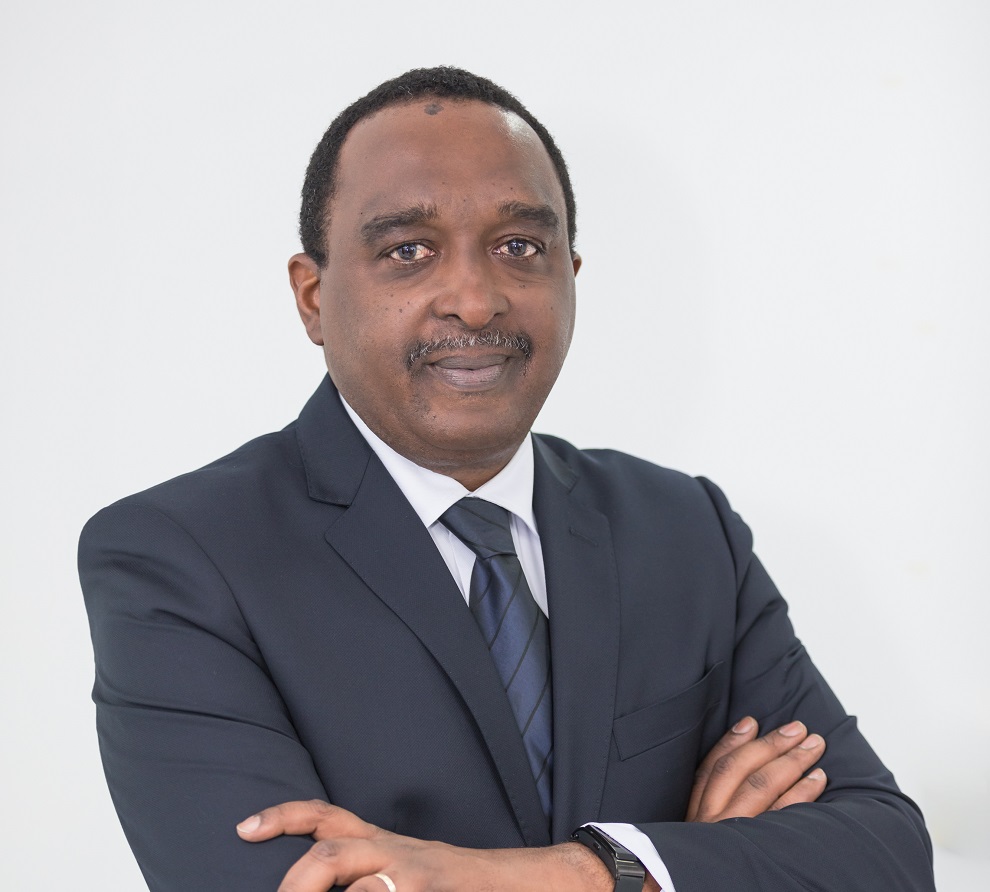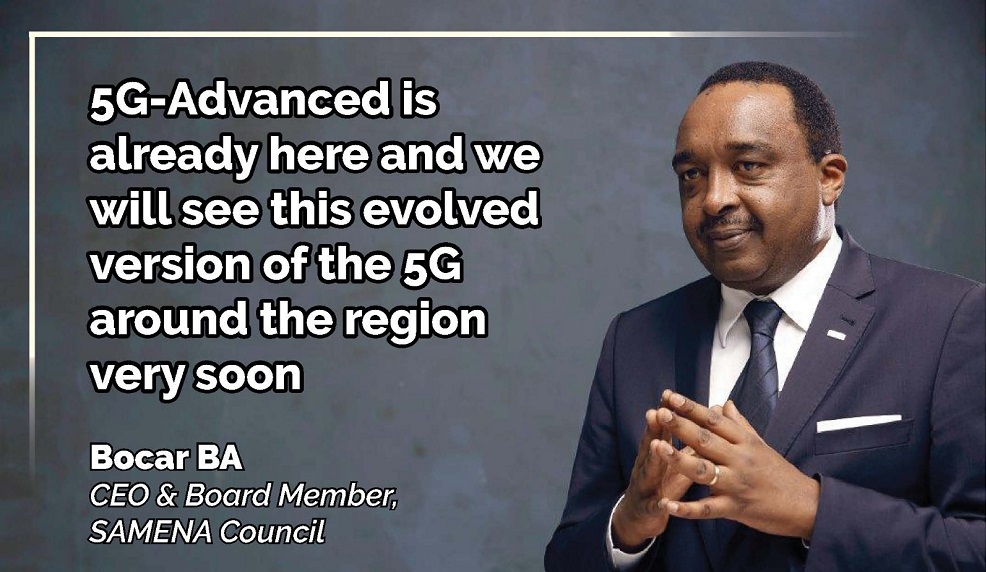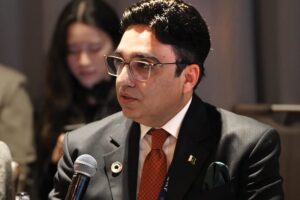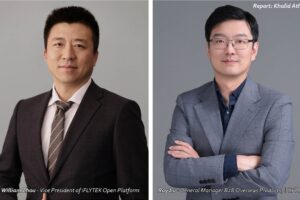Teletimes Interview
5G evolution is underway and 5G-Advaced (or “5.5G”) networks are on the verge of emerging. This is significant, as it opens new doors for new technology deployment scenarios, new socio-economic use-cases, and for enhancing the digital connectivity profile of this region. In efforts to uncover what is ahead in 5G, 5G-Advanced, and how 5G investments can be monetized better, especially through Fixed Wireless Access, some exclusive insights are shared by SAMENA Council with Teletimes International, a key media collaborator for the Council. Bocar BA, CEO & Board Member, during a recent media roundtable held in Istanbul, provides an account of what is ahead in 5G and how fixed networks, particularly gigabit optical networks, need to become a priority for the region.
Teletimes: How do you view success of 5G and the emergence of 5G-Advanced, in light of the ELITE FWA Club that SAMENA Council is supporting to foster knowledge- and experience-sharing in 5G FWA deployment around the region?
Bocar BA: 5G is a reality, and it is only becoming clearer by the day that it serves as a critical, strong foundation for an inclusive digital future, and a biome for an incredibly large digital ecosystem. 5G has demonstrated its potential to create new social and business value, materialize advanced digital experiences, and unearth a myriad of opportunities across Healthcare, Education, eGovernment, and other sectors. It helps to note that the Middle East ranks among the world’s very first regions to adopt 5G and, incidentally, the same region is home to some of the most well-defined ICT and economic diversification visions in the world. To support these visions, 5G-Advanced is already here, and we will see this evolved version of the 5G networks launched very soon around the region. 5G-Advanced speed of 62 Gbps has already been announced in the UAE.
However, one of the biggest challenges with 5G has been timely monetization of infrastructure investments. To help address this, SAMENA Council, in collaboration with key Members of the Council, especially Huawei, launched the ELITE FWA Club. SAMENA Council’s support to the Club’s creation also originates from a need everyone is well-aware of; connecting the unconnected.
“Our Industry, today, is facing a huge challenge, and that is to smartly invest CAPEX for deploying high-speed broadband across the developing countries.”
Our Industry, today, is facing a huge challenge, and that is to smartly invest CAPEX for deploying high-speed broadband across the developing countries. One of the technological solutions that make it easier to meet this challenge, and particularly in underserved areas, is Fixed Wireless Access (FWA). FWA cannot only mitigate the challenge of fiber deployment in several deployment scenarios, but can successfully complement fiber presence, while also providing quality-of-service comparable to fiber. So, essentially, these were the main reasons for creating the ELITE FWA Club. By establishing the Club, what we are looking for is to share best practices within the Industry, with the technology front runners and starters, telecom operators that have deployed FWA or have plans to do so, and how we can advance digital development and, of course, reach the objective of connecting the unconnected.
TT: In light of your collaboration with Saudi Government and the Private Sector, how do you see the progress of 5.5G in Saudi Arabia and what are the support and partnership areas that SAMENA Council is currently working on?
Bocar: Saudi Arabia is an important market for SAMENA Council and its Members. It is the region’s largest digital economy. Therefore, the Council is actively involved in Saudi Arabia at both Government and Private levels. The Saudi Government is executing the Vision 2030 on a very speedy mode, and one of the key contributions of SAMENA Council is to bring around the table and convene different stakeholders from the Private domain, which includes Telecom Operators, particularly our Members, stc, Mobily, Zain, Salam, to build collaboration bridges with the Government and internationally. The objectives of this facilitation are to assess where regulatory impediments exist in accelerating digital development, and how they can be overcome, while ensuring we are moving forward with sustainability in mind, toward sustainable digital transformation and sustainable development as our main goals. SAMENA Council very closely engages with CST in terms of discussing requirements of the Private Sector, including ways to materialize agile and flexible regulatory approaches. We also engage objectively and closely with the Ministry of Communications and Information Technology (MCIT) on policy issues to help incentivize investment, promote innovation, and preserve independence and ICT leadership.
Cybersecurity is among the key areas of the Council’s involvement in Saudi Arabia. We work with the NCA, National Cybersecurity Authority through the Global Cybersecurity Forum (GCF), where we are addressing cybersecurity issues and contributing the global dialogue on securing the cyberspace, ensuring overall cyber safety for both digital systems as well as children. Cybersecurity measures are not only critical for 5G deployment, but for the upcoming 6G technology as well. Last month, the successful meeting of the GCF witnessed great openness among industry stakeholders on cybersecurity issues, and how widely this dialogue needs to be maintained. In addition to GCF, SAMENA Council is also engaging with competition authorities in Saudi Arabia.
“Saudi Arabia is an important market for SAMENA Council and its Members. It is the region’s largest digital economy.”
Collectively, all of these collaboration examples signify the importance that SAMENA Council gives to the Saudi market and to Saudi digital development plans. Of course, we fundamentally support our Members’ requirements, but as a sector-development partner to regulatory authorities and government entities around the region, the Council’s involvement in Saudi is driven by the aspiration to inspire similar policy and regulatory advancements around the region, across developing countries. Saudi Arabia, given its large footprint, is among the world’s advanced countries in term of ICT policy, G5 regulatory classification, digital infrastructure presence, digital innovation, job-creation, uptake of AI, and steps being taken toward digital transformation, in general.
TT: Are you collaborating with key technology providers, such as Huawei, in this domain or others?
Bocar: The role of technology providers, and especially of those having long-term investments made in terms of people, systems, resources, infrastructure, and technologies, is absolutely critical. Equally so, Technology Providers such as Huawei, are an integral part of the community of SAMENA Council. Huawei has made massive investments in the region’s ICT Industry, and SAMENA Council fully supports this level of engagement in the interest of the Industry, and also because doing so supports the Council’s own motto of building digital economies.
From an industry perspective, for Telecom Operators’ frame of mind, it is important to have an idea about where a Technology Provider will be taking them. Huge CAPEX and OPEX investment planning is at stake. Moreover, it is important in terms of research and development to understand the strategic direction undertaken by a Tech Provider, especially Huawei. With the region fine-tuning its policy focus and action plans on being driven by sustainability, predictability in business, digital integration, digital inclusion, and host of other underlying goals, close collaboration with Technology Providers is an imperative for both Operators and Governments. Achieving ICT maturity is essential for the region and for ICT markets that are either adopters or are frontrunners in digital transformation – to borrow terms lately used by Huawei in its Global Digitalization Index 2024, announced last month during GITEX 2024, and which is fully supported by SAMENA Council as a part of our own digital transformation maturity assessment exercise. This Index developed by Huawei is not just a tool for assessing digitalization progress, but, more importantly, it is a roadmap that helps countries see where they are currently positioned, and where they need to be in alignment with their own unique national dynamics and ICT visions. This Index is a great contribution by a Technology Provider, and I urge all industry stakeholders to look into the findings and recommendations made by the Index.

“From an industry perspective, for Telecom Operators’ frame of mind, it is important to have an idea about where a Technology Provider will be taking them.”
TT: It seems that there is an industry-wide consensus on 10 Gbps. How can regulatory authorities around the region support this objective in advanced network development and user experience?
Bocar: With the massive adoption of connected devices, with the proliferation of high-bandwidth consuming applications, with the arrival of massive IoT, with AI catching momentum, and the ICT Industry and other industries and adjacent sectors collaborating ever more closely together, which generates even higher data traffic, it is inevitable that we’d need gigabit network capabilities to support our highly interconnected ways of living and doing business. Therefore, SAMENA Council, since 2023, is actively advocating and promoting the need for creating the 10 Gigabit Society. Earlier, in October this year, we convened policy and regulatory leaders, Telecom Operators, Technology Providers, broadband-focused industry bodies, as well as ecosystem partners for a deep-dive into accelerating 10 Gigabit infrastructure development in the Middle East and in Central Asia.
The concept of 10Gigabit is important in view of the dire need for digital innovation, digital inclusion, and digital sustainability. Gigabit networks, especially optical and fixed networks, are the backbone of any digital economy. Thus, it is important for policy and regulatory approaches to take this into urgent consideration, and create the right enabling environment to accelerate fixed network development in the region. We still have a lot to do. We are working proactively. We are having a multi-stakeholder dialogue. And of course, we welcome any requirements from the regulators to help frame proper regulation for the benefit of the consumer, the business customer, and the citizen.
TT: How do you see the significance of holding the Global Mobile Broadband Forum (MBBF), especially in light of the developments within the 5.5G features?
Bocar: There are some very successful legacy knowledge-sharing platforms that are of great value to the Industry. The MBBF forum is among these key platforms with over a decade-long legacy. MBBF is serving the Industry by sharing best practices, experiences, ideas, use-cases, and showing development path of 5G, 5G-Advanced, Fixed Wireless Access, Artificial Intelligence, Gigabit networks, etc.
Take for example, Fixed Wireless Access. Reaching remote areas is a mandatory task that every government is trying to fulfill. Through cross-sharing of deployment experiences, challenges, methodologies, and other useful information, new approaches can be adopted in deploying this technology more speedily, and more efficiently. This year’s MBBF forum made a strong point that it is important for the governments and for the Private Sector to make the right and timely decisions when it comes to cost-effectively deploying useful technologies. In short, MBBF is a highly important platform and adds value to the mobile broadband market.
TT: How do you view feasibility of FWA within the GCC countries like Oman, especially in light of Oman Vision 2030?
Bocar: I’m glad you asked me this question about Oman. Oman is getting more aggressive with its national Vision, and more proactive in overall transformation. This is very good news, because a key, ultimate objectives of Oman is job-creation. Notably, Oman, in the Arab region, is a center of innovation, and we are not mentioning it enough. We need to do more for and with Oman, to promote Oman’s readiness for and achievements in digital advancements. Keeping in view Oman’s geography, with mountains, islands, deserts, and coastal plains, FWA is an ideal technology and can be a game-changer in digital transformation efforts, nationwide. Omantel, as a key FWA player, is very experienced in FWA. They are also chairing one of our working groups. Therefore, FWA has a high feasibility in Oman to provide connectivity, to create new benefits for the Sultanate in terms of socio-economic advancement, job-creation, and uplifting the youth and also becoming the Middle East’s center of innovation.
TT: SAMENA Council, by now, must have started its planning for the next year’s Leaders’ Summit. Could you shed light on the key topics you will include in the agenda about 5G and AI?
Bocar: Well, you are right, as you mentioned. We are planning the Leaders’ Summit 2025. Of course, the heart of the talk is going to be centered around 5G-Advanced. We may include 6G into the discussion or at least in the roadmap, depending on the appetite for this topic within the Industry, as we are at a very early stage in terms of standardization on this front. Right now, the focus is 5G-Advanced. Cybersecurity will surely be among the key topics, and then monetization of the infrastructure, AI especially in terms of telecom network fraud management and revenue growth opportunities with AI, some cross-industry applications of 5G-Advanced, involvement of the healthcare industry, mobility industry, and convergence of terrestrial and non-terrestrial networks are keenly anticipated focus areas for the next Leaders’ Summit.
There are various other diversified subjects that we will try to bring to the table and demo. Regardless, the objective of the Leaders’ Summit remains: to provide an ambience for the leaders to interact, inspire, empower, and exchange knowledge in a world-class setting. We are in a complex world; interconnected, interrelated. There is a need to harmonize efforts from the private sector and governments to create a sustainable way forward, to be able to reach our objectives in fulfilling Sustainable Development Goals and connecting everyone.
We will have more clarity on Leaders’ Summit 2025 by early next year.












